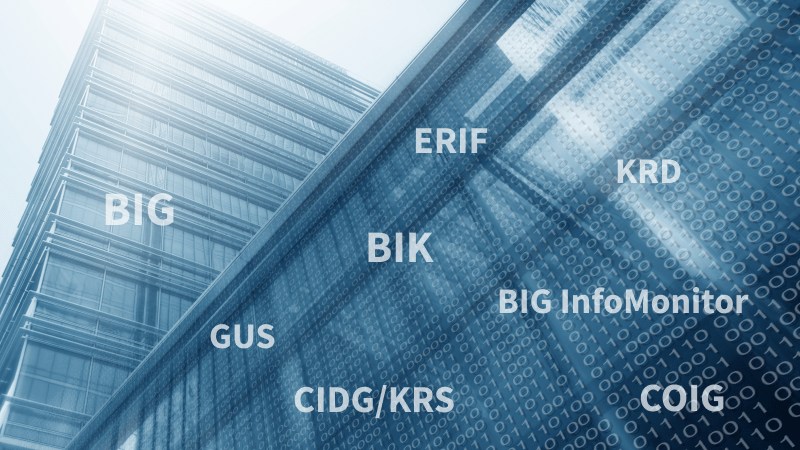The finance revolution of the Young Generation. Trends and changes in banking
In recent years, we have been observing a dynamic evolution in the world of finance, especially in the context of the young generation. In this article, we decided to share our observations on the latest trends and changes in banking and how technology is revolutionizing the approach to finance.
Modern online processes in banking based on the workflow system
In today’s dynamic reality of banking, a key aspect of the effective functioning of financial institutions is the consistent adaptation to advancing digitization. Modern technologies and innovative applications have become an integral part of daily banking operations, and the key to success lies not only in their implementation but also in adeptly adapting to the changing needs of customers. Regardless of location or device used, customers expect smooth, personalized, and online-accessible processes. In this context, a significant tool is the workflow system, which not only enables coordinated workflow but also introduces automation, streamlining key banking processes.
Inter-sector information exchange and customer education are the most effective anti-fraud measures
Credit fraud is one of the main risks that financial institutions face daily. With the dynamic development of remote transaction channels, the threat from cybercriminals using increasingly sophisticated and refined fraudulent techniques is growing. The question arises, which of these techniques become particularly significant today, in the era of the triumphant march of artificial intelligence?
A fast and secure credit process requires advanced tools
Financial monthly “BANK”: today’s consumer is highly demanding, expecting at the same time security, convenience and 24-hour availability of banking services. How to create the tools responsible for credit processes to be able to meet both the customer’s expectations and the regulatory requirements?
Credit systems and the central system in Banks
Credit systems can be presented as a set of solutions supporting the assessment of customers, transactions and risk when making decisions whether to enter into a contract or its further course. Examples of such solutions are our VSoft Credit and VSoft Rating products. In addition, systems responsible for credit processes can connect to other systems to deepen the analysis or provide added value to the assessment, e.g. using VSoft Connectors. Where is the central system in all this? Were does its name come from? What is it and what tasks does it perform? You will find it all out in the article below
Transaction rating evaluation
The proper functioning of the company on the market and the achievement of its business goals requires access to financial resources. Very often, the lack of financial liquidity contributes to delays in paying off liabilities and debts and, in extreme cases, may even lead to the bankruptcy of the company. Among the many available sources of business financing, one form is external financing in the form of short- or long-term loans. Other forms of financing, such as leasing or factoring, are also possible. Another method of raising capital for new investments and company development may lay in issue of debt securities, e.g. in the form of corporate bonds. However, each of the above-mentioned forms of financing requires a detailed risk assessment of such a transaction. Such an assessment...
Corporate rating
One of the key activities supporting the stability and security of the functioning of large corporations, as well as small and medium-sized businesses, is the assessment of the credibility of customers/business partners and verification of their ability to meet their obligations. So what should be included in the rating of business partners and how should the given rating be interpreted? I will try to answer this and some related questions in this article – I invite you to read.
Automation of the tax settlement process for real estate, agricultural and forestry tax
Tax settlement for local taxes may take a day, a week, or a month. In the case of taxpayers who have a lot of real estates located in many municipalities in Poland or are characterized by high dynamics of changes, the settlement process should be repeated many times by performing a number of similar activities, which often paralyzes the activity of accounting departments during sensitive periods.
Back-office processes in banks
When dividing the bank into process owners and their contractors, we must not forget that they operate within the organizational structure and competences assigned to positions/areas and tasks, resulting, among others, from strategic goals, KPIs or quality requirements etc. Due to its importance, each process can be carried out by one or more units or internal structures operating within a department or office. Joint arrangements and defining what is the beginning and end of the process are key to identify the responsibility and set SLAs. In the context of the arrangements that affect all structures in the bank, in particular some of the back office, servicing or, simply, operations/support processes, this division is extremely important.
VSoft BIK KI connector – time for changes
The world is evolving, and the pace of change is faster than ever. The innovative and very modern solutions that were created yesterday, today no longer surprise anyone, and many of them are considered unfashionable, sometimes even outdated. It is particularly noticeable in the world of IT solutions. Not so long ago, we boasted about creating VSoft Connector BIK KI. Today we want to present a new version of the connector. The graphic interface has been created from scratch in accordance to the current standards, trends and the latest technologies. Suggestions for changes from users were taken into account in the context of ergonomics, ease of use, business usefulness and facilitating the work of analysts with BIK reports. Now the application looks fresh, and the subdued and very...
Open banking = new opportunities for companies outside the financial sector
Open banking is often referred to as a revolution, and in many ways these words are not exaggerated. For customers, open banking means convenience, lower costs, completely new services and possibilities. For companies, it is an opportunity to reach for one of the most valuable assets of the financial industry – in-depth information about the client. Importantly, this treasure of knowledge can be used by companies related to the world of finance as well as those that have nothing to do with it.
Usability design principles – UX in online credit processes
User experience (UX), which is what users experience when using a given system, is used in the process of building added value for our customers, i.e. usability, pleasure, ease of use, and having a specific flow that will make our product attractive and make good impressions on the customer. We use it, among others, in such processes as: modern electronic banking, bidding processes, after-sales events and any other in which the client performs certain activities in our environment. What principles should we follow when designing online processes for banks or other financial institutions? What does it mean to be based on the client’s requirements and listen to their voice? Do we really need it? We asked our expert on UX and an ardent supporter of translating customer requirements...
Comprehensive credit risk assessment
We live in a time when the only sure thing in business is change. Functioning in a rapidly changing business environment can both give the potential for dynamic development and cause problems for companies in assessment of the current situation. Therefore, it becomes crucial to accurately identify threats and opportunities, properly assess the situation, determine an action strategy and continuously monitor the situation. One of the basic activities, supporting the stabilization and security of the functioning of banks, large corporations as well as small and medium-sized enterprises, is the continuous credibility assessment of clients/commercial partners and their ability to meet their obligations. Is it true, then, that control is the basis of trust in business relationships? How to perform a comprehensive rating of business partners and transactions with...
Cloud solutions – are they the technological future for business?
In the last few years, technology has become the basic determinant of the company’s perception as modern, and it has a significant impact on the competitive advantage in every industry. IT departments are increasingly responsible for innovation and building the business value of the organization. Over 90% of companies that are perceived as market leaders use cloud solutions in their operations, which become the technological factor that allows them to distinguish themselves from the competition – only every second company aspiring to be the leader has implemented the cloud in their organization.
Online in credit processes
I need a loan of PLN 5,000. I go to the app of my bank / loan institution on my smartphone, I do not log in because my image does it for me, the basic products and an icon with the available financial limit are displayed – I click. A new form with a zipper appears, I play with it and in my mind’s eye I see new possibilities. Encouraged by the great-looking offer, I choose PLN 15,000. I keep clicking, something appears… What is it?… 🤔 I let go… and keep clicking. Ooh, new funds in my account. Nice 😊 I get e-mails and text messages with thanks. Great!
The idea of a central system of external content in an institution
Nowadays, no company, institution or organization can function without data. Data is essential for analysing, reporting and forecasting trends, and therefore also for planning the future. If we are talking about financial institutions that deal with granting loans, credits and financing various economic activities, data verification and analysis becomes crucial. At a certain organizational stage, the own data, which is in the possession of the institution, is sufficient, but internal data becomes insufficient for a more complete analysis and forecasting of the future. That is why so many institutions use the acquisition of external data, usually provided for a fee, by various Economic Information Bureaus and the Credit Information Bureau. Thanks to external data, we get a more complete picture of the client and we can look at...















